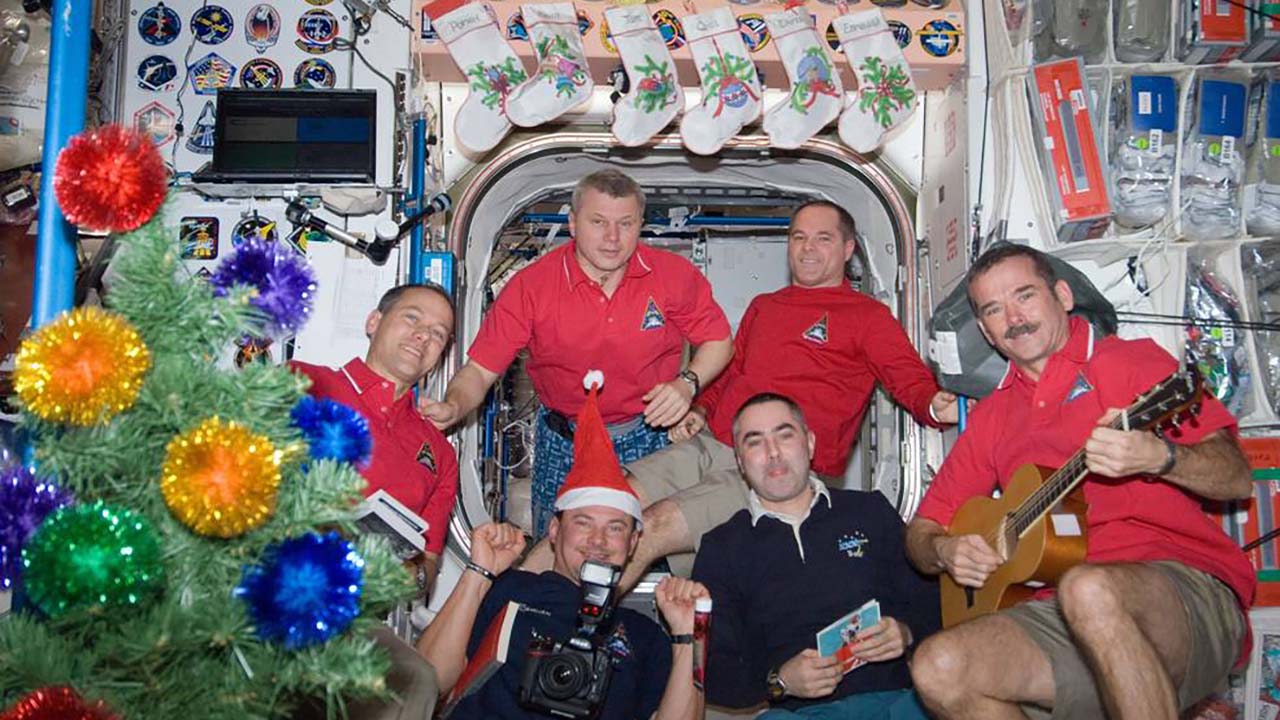Looking back on 2021, we saw many exciting and impressive developments in the space industry despite the challenges of the continued pandemic. The industry continued to benefit from broad and secular trends of declining cost and increasing frequency in access to space; rapidly increasing data processing capabilities; progress in robotics, autonomy, artificial intelligence, and machine learning; and advancements in materials and energy tech. The year 2021 shaped up as a record funding year for the industry, characterized by more than a dozen announced or closed SPAC deals and with the first nine months’ infrastructure funding totals exceeding the prior high water mark of full 2020, and 4Q looking strong. The highly favorable capital access dynamics allowed companies to spur innovation, whether to build or buy, and execute at a higher-than-expected pace. We saw exciting progress with civilian spaceflight, and the emergence of several commercial space station plans. So now it is time to take a quick look into what to expect from 2022.
Communications and Earth observation buildout momentum to continue: We continue to expect strong tailwinds going into 2022, as well-known communications constellation buildouts, led by Starlink, OneWeb, Telesat Lightspeed, and Project Kuiper, but also including several others, execute and deploy technology and operational capabilities in orbit and terrestrially. These are capital-intensive endeavors, and end-user economics will be key for business models to pencil out. Earth observation data and analytics markets have benefited from the recent SPAC capital injections and M&A activity, and increased focus on climate, energy, infrastructure, supply chains, and ESG. These markets are poised to take increasing shape around expanded use cases, beyond the still dominant government demand, particularly as availability and access to data increase and price points decline. All these related constellation deployments are continuing to drive launch and manufacturing needs, but also pressure the space industry supply chains that need to achieve sufficient redundancy and scale. This increased constellation proliferation will also raise the relevance of support technologies ranging from in-orbit servicing and logistics to debris mitigation.
Growing defense needs: During 2021, we continued to see the expansion of the defense sector’s engagement of private space sector innovation across an increasing range of applications and capabilities. We would expect the strong interest to continue, given the critical infrastructure and increasingly contested nature of the space domain, broader geopolitical dynamics, and favorable budgetary trends. Such support can be extremely valuable for early-stage companies in funding, validating, and maturing their technologies. However, the time and resources required to convert initial, SBIR-type support to material-scale defense contracts can be a challenge.
All eyes on Starship: Clearly, one of the key developments to watch in 2022 is SpaceX’s progress with Starship. Per metrics discussed in the public, Starship would have a profound and disruptive impact, with the potential to reduce the cost of launching a kilogram to orbit by a magnitude or more and provide record mass to orbit per launch, thereby unlocking new opportunities in the LEO economy. But the progress here will also raise questions around the required competitive response and eventual viability of various existing or in-development but materially higher-cost value propositions ranging from launch businesses to planned space infrastructure for in-orbit activities.
“Show me the performance”: While 2021 saw a torrent of space SPAC deals, and there appear to be several more in works, the continuation of the SPAC funding at comparable levels looks less certain. We have already seen increased focus from SEC and commentary on reduced availability of PIPE (private investment in public equity) funding. So far, the space SPACs as a group have underperformed the broader equity markets. A stronger performance from these newly listed entities, hopefully with the emergence of several high performers, will likely be needed to sustain market appetite in 2022, particularly if there are changes in the broader price of risk. Public market performance here will have implications (albeit delayed) on access to earlier-stage capital, and if the mix of space company exits in 2022 shifts more toward industrial or roll-up M&A versus public markets, this will affect the investment return expectations as well.
Continued growth in space R&D: We at the International Space Station (ISS) National Laboratory are continuing to see increasing research and development (R&D) interest in low Earth orbit, ranging from fundamental research to applied research and later-stage technology readiness level raising, with a record level of response to our solicitations during FY 2021, and a strong rebound in the number of projects we were able to award relative to FY 2020 levels. Similar to many other areas of the space industry, the demand for space-based R&D is price-elastic, and increased access, affordability, and standardization across emerging platforms will be essential to expand the addressable opportunity and drive share gains across R&D budgets. The recent phase 1 CLD awards by NASA provide additional early visibility into the future platforms for this market as well. We look forward to a strong FY22. Our current and upcoming solicitations can be found here: www.issnationallab.org/research-on-the-iss/solicitations.
We also continue to be encouraged by capital raising activity by startups in our ecosystem, which to us shows both third-party validation of the ISS-based technology and product development, as well as continued progress in our clients’ business execution. Looking at the combined data across the ISS National Lab startup ecosystem, based on our estimates and publicly available data, we have seen these companies raise more than $1.2 billion of private and public funding post ISS National Lab flight projects!
We wish you happy holidays and a successful start to 2022!







